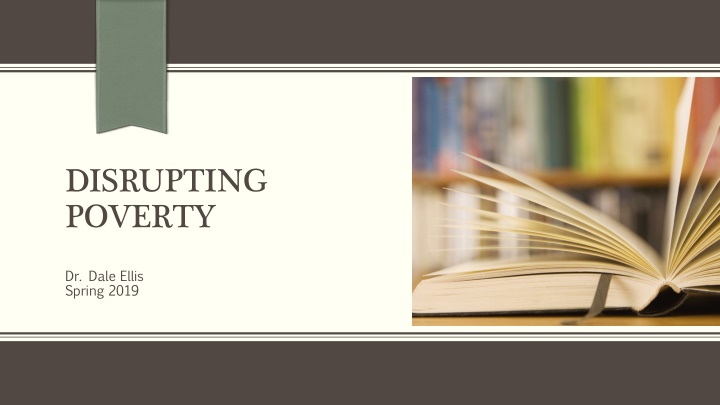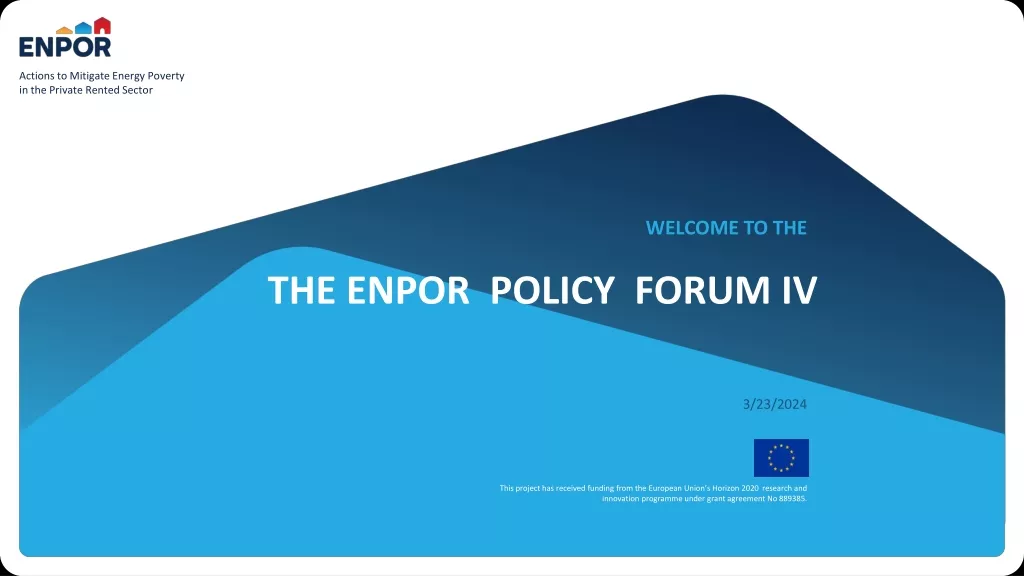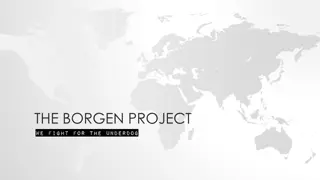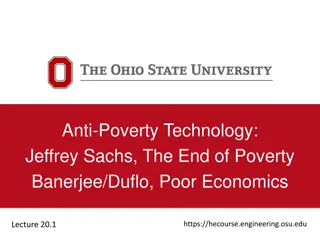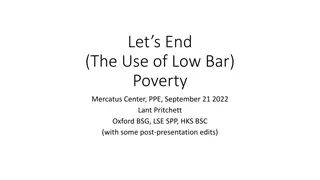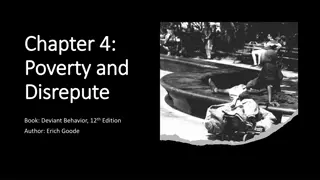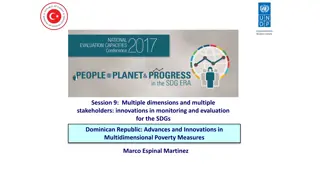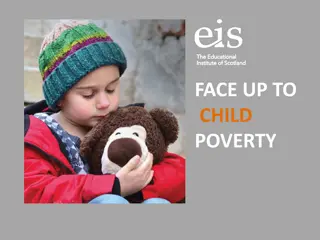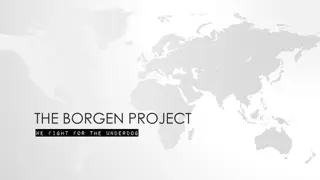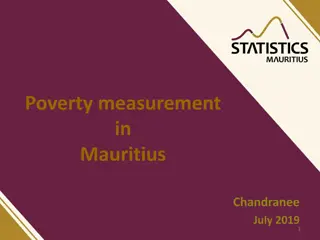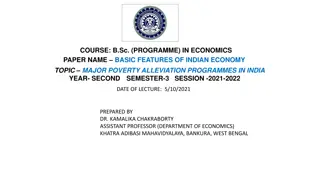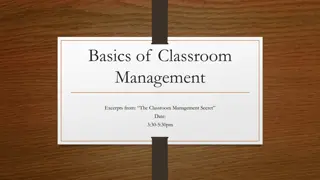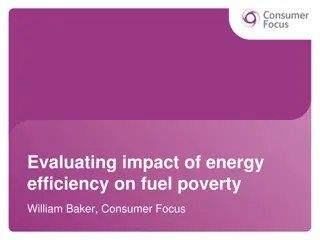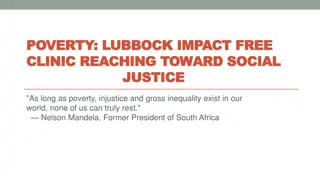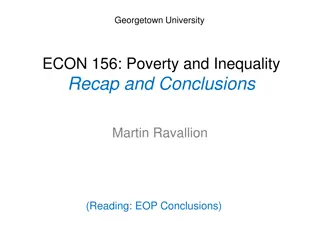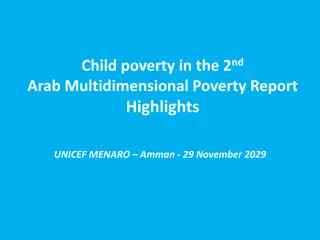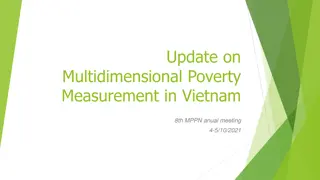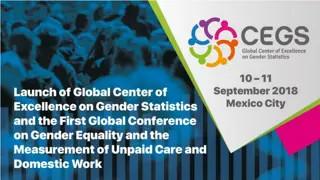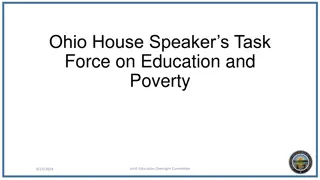Disrupting Poverty Classroom Strategies
Educators must understand the impact of poverty on students and implement strategies to disrupt its effects. Building caring relationships, holding high expectations, and providing support are key elements in creating a culture that addresses poverty in education.
Download Presentation

Please find below an Image/Link to download the presentation.
The content on the website is provided AS IS for your information and personal use only. It may not be sold, licensed, or shared on other websites without obtaining consent from the author.If you encounter any issues during the download, it is possible that the publisher has removed the file from their server.
You are allowed to download the files provided on this website for personal or commercial use, subject to the condition that they are used lawfully. All files are the property of their respective owners.
The content on the website is provided AS IS for your information and personal use only. It may not be sold, licensed, or shared on other websites without obtaining consent from the author.
E N D
Presentation Transcript
DISRUPTING POVERTY Dr. Dale Ellis Spring 2019
Introduction It s more that what you teach and how you teach it Moral conviction is not enough You must have a culture that attacks poverty rather than excuses it
Classroom Cultures that Disrupt Poverty To disrupt poverty, ALL educators must believe the following 5 tenets: 1. People s experiences of poverty are diverse. 2. Poverty has an adverse effect on people s lives and a student s ability to learn in probable and identifiable ways. 3. Inequitable conditions in schools and classrooms further disadvantage students who live in poverty. 4. Educators not only must be able to recognize inequitable conditions, they must have the ability and willingness to address and correct those conditions. 5. Stereotypes about people in poverty are deeply embedded in our society and influence how we see the world.
Adverse Effects of Poverty Material Resources Health and Well-Being Food Insecurity Neurocognitive and Neurobehavioral Development Housing Instability Family Stress and Trauma Neighborhood Risk Factors Interrupted Schooling Language and Literacy Development Social Capital Cultural Capital
Disruption 1: Building Caring Relationships and Advocating for Students This is the first and best strategy. Positive impacts include: Increased Effort Increased Motivation Increased Resilience and Risk Taking Improved Academic Performance
Suggestions for Building Relationships Start with the four critical building blocks: Identification, authenticity, empathy, and trust View parents/families/caregivers as a key resource Sweat the small stuff (everyday interactions make the difference) Be fully present, listen, and set aside time to bond Teach routines and provide structure Create a sense of extended family and community Move beyond defined roles Harness the power of creativity Build a network of support
Disruption 2: Holding High Expectations and Providing Needed Support Despite numerous studies showing the positive impact of high expectations, we continue to do the opposite Low Expectations contribute to Opportunity and Achievement Gaps This phenomenon is especially crippling to students who live in poverty
Suggestions for Holding High Expectations Build on relationships to make learning relevant Provide for rigor and risk taking Be a warm demander : Insistent and supportive Act from an empathic perspective Hold a growth mindset and encourage the same in the students Employ the 4C s: Caring, Clear, and Consistent Communication
Disruption 3: Committing to Equity This practice is much harder than it sounds or appears on the surface! Cultural Proficiency Equity Literacy (Do we really know what it is to be equitable?) Anti-bias Education The Litmus Test: Homework, Grading, Classroom-based Assessment
Suggestions for Committing to Equity Know what your students need Meet basic needs to clear the way for learning Differentiate, scaffold, model but don t dumb down Help students become advocates for their own learning Advocate for change
Disruption 4: Accepting Professional Accountability for Learning Do we hold ourselves accountable for learning? Do we make excuses? Self-Efficacy Do we truly believe we can make a difference? Self-Awareness Are we truly reflective practitioners?
Suggestions for Holding Yourself Professionally Accountable for Student Learning Focus on what you can control Be open to critique and willing to learn Find an accountability partner Let students know you won t give up on them Consider yourself on the same team as your students Take risks
Disruption 5: Having the Courage and Will to Take Action Hey! Haven t we heard all of this before?
Wrapping up Questions? Comments? Concerns? Complaints?
